Huitlacoche, also known as cuitlacoche, is by far the most famous of any mushroom eaten in Latin America, with a history and tradition to rival any of the most prized wild mushrooms. If you like Mexican food and haven't had it, you're missing out on a fascinating culinary delicacy of Central America.
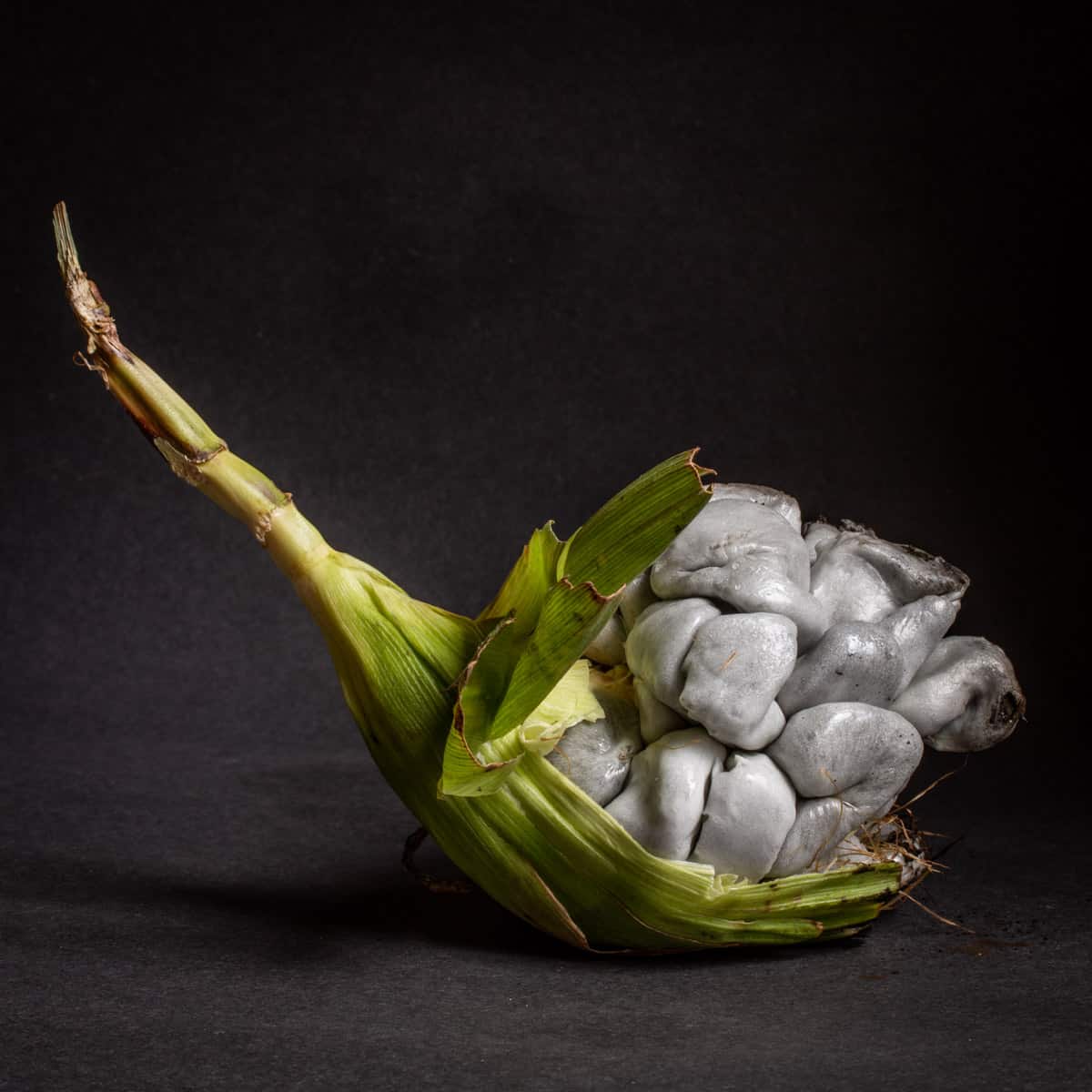
I grew up on a farm surrounded by corn fields stretching out as far as the eye can see, and I was taught sweet corn smut was something disgusting, a sort of plague that destroyed the fields of corn farmers.
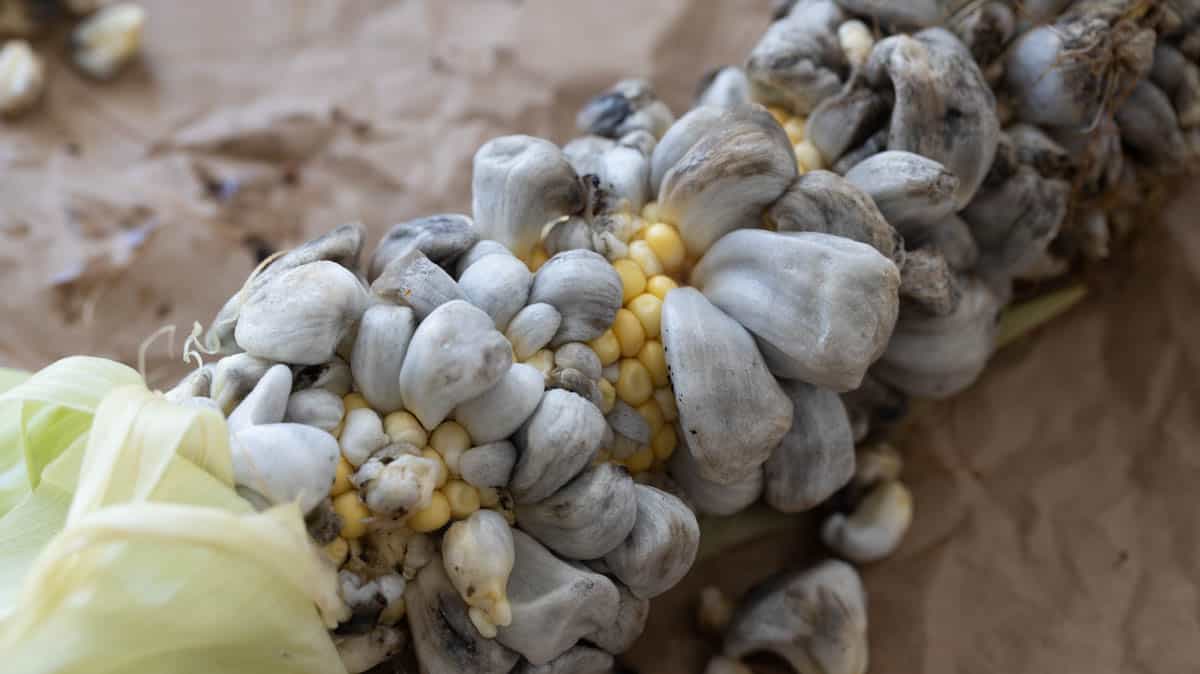
What is Huitlacoche?
A type of corn fungus, Huitlacoche is the fruit of a fungal disease that infects corn plants. It's known as the fungus Ustilago maydis. Corn gets infected with U. maydis spores as the result of an injury or disturbance (deer nibbling corn cobs, for example) which turns the corn kernels into mushrooms known as huitlacoche galls.
History
Also known as the Mexican truffle, huitlacoche is the indigenous name derived from Nahuatl, the language of the Aztecs of Central Mexico. The mushrooms were prized as a food (they contain almost all essential amino acids). I've read the corn was inoculated by smearing cut corn stalks with the black inky liquid of the mushrooms.
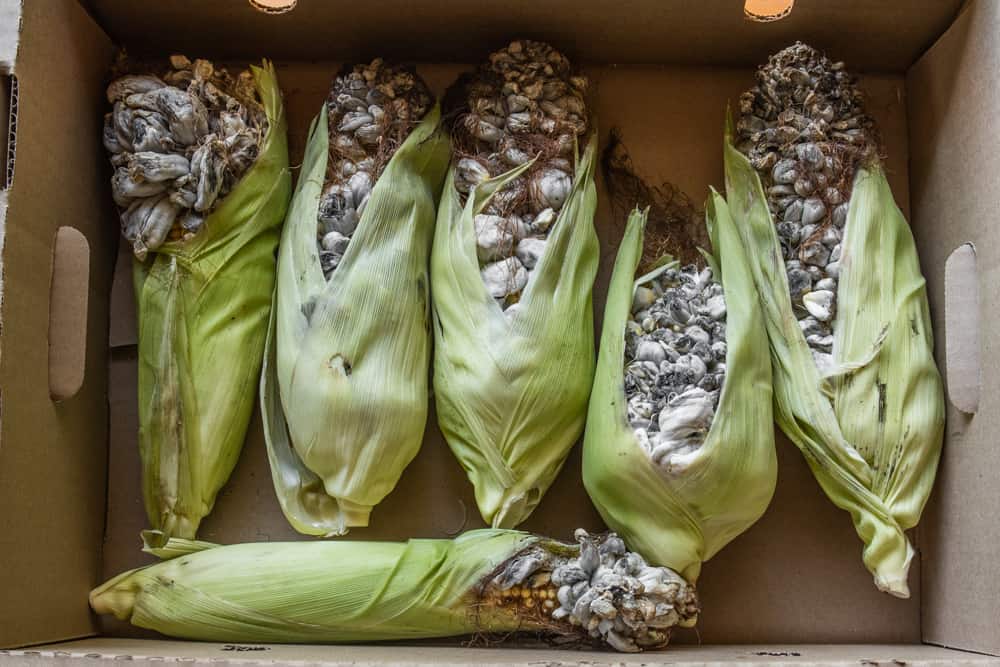
After ears of corn are infected, individual kernels of fresh corn start to swell in size and turn grey. The kernels swell and "ripen", turning black, soft, and powdery as the fungus grows. That black mushroom powder contains the spores of the fungus that travel through the air to help the fungus spread.
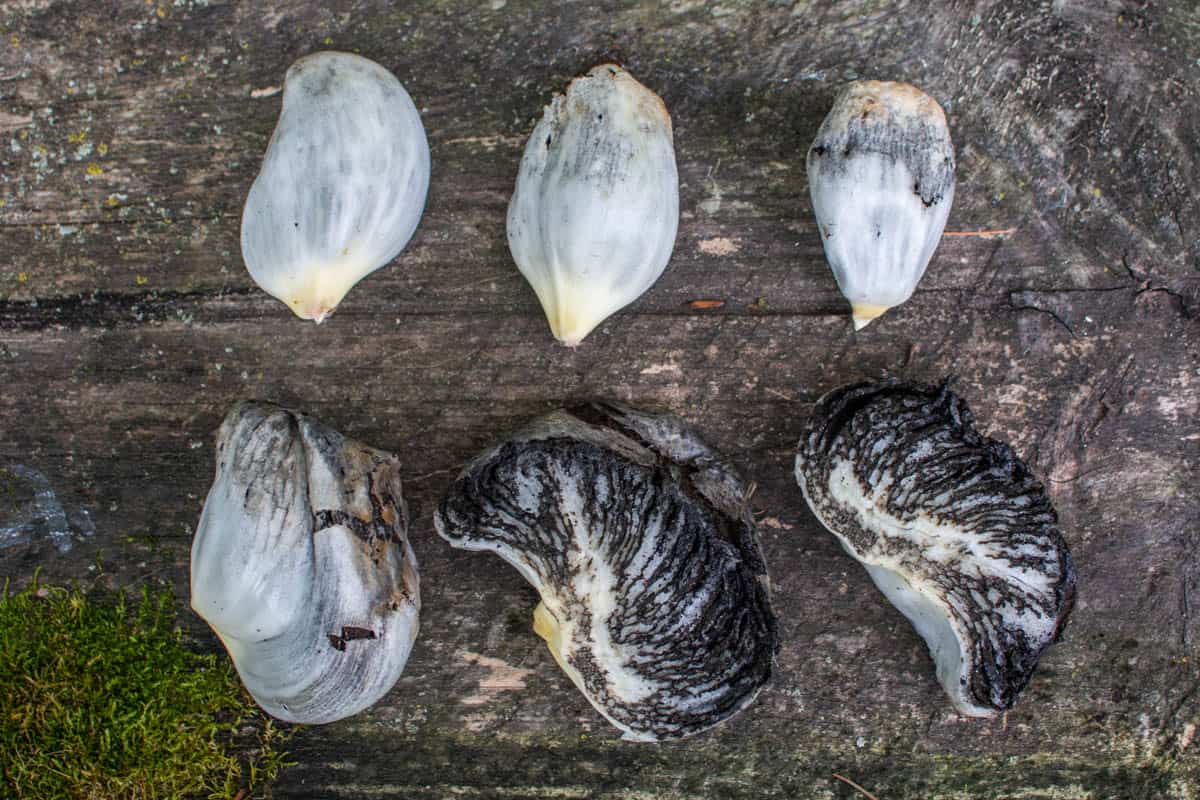
Genus Ustilago
Ustilago maydis is only one of a number of fungi in the Ustilago genus that infect grasses. These fungi spread by transforming part of the host plant into a vehicle for spore production.
In China, another plant disease, Ustilago esculenta infects Chinese wild rice, but instead of the grains being the vehicle for spreading spores, it makes the stems swell. Just like U. maydis, U. esculenta (as the name esculent implies) is also harvested for food.
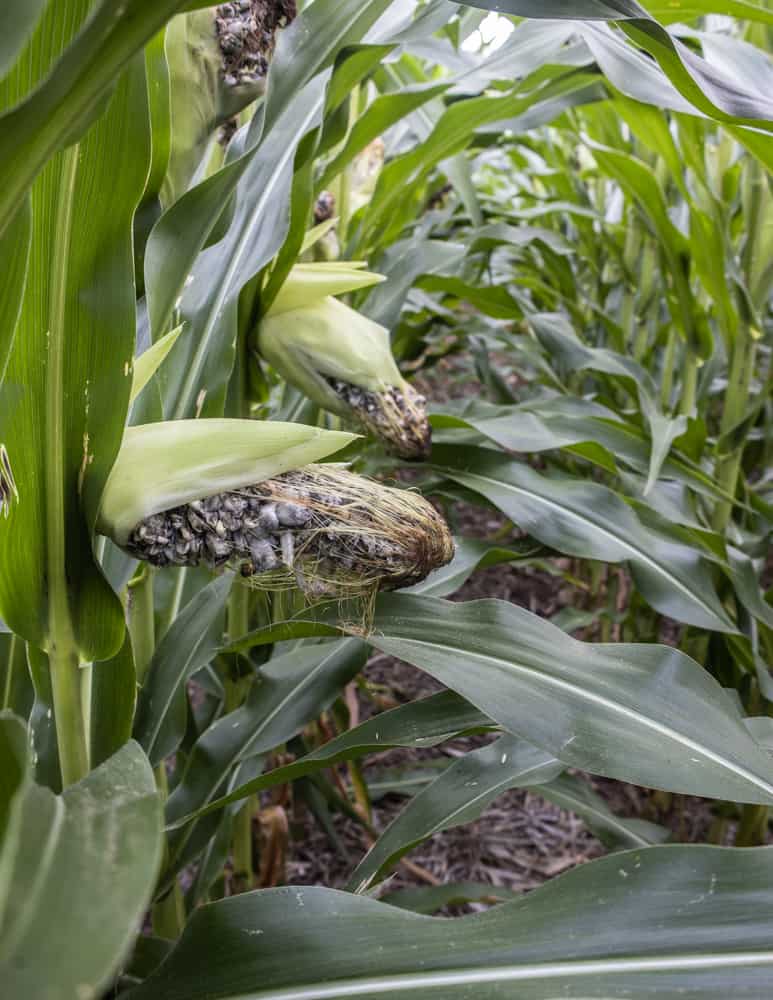
Commercial Sale
Huitlacoche is now grown as an alternative corn crop in the United States by some American farmers, with the mushrooms being sold through wholesalers around the year. Corn mushrooms cost around 25$ per pound: a much higher price than cultivated mushrooms, or corn, for that matter.
The majority is sold frozen. Occasionally you might see maize mushrooms at farmers’ markets in large cities. It's a seasonal product chefs from California to New York City have begun to use recently.
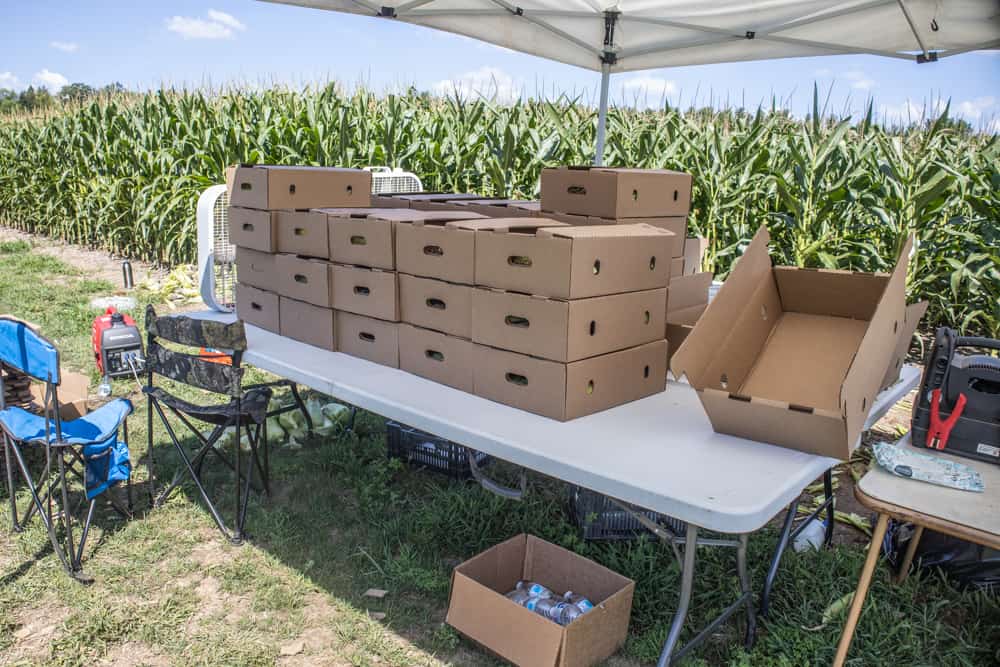
Canned Huitlacoche
The mushrooms are sold in small 7 oz cans, typically running about 6-8$ each. If you go to a Mexican restaurant or specialty grocery store in the United States and get the huitlacoche quesadilla, 99.9% of the time it's from a can.
Unfortunately canned huit isn't as good as the fresh product. First, the canned version is expensive and may come already seasoned. The cans also contain plenty uninfected corn that gets cut from the cob along with the mushrooms. But, if canned is all you can find (and likely will be) it'll do in a pinch.
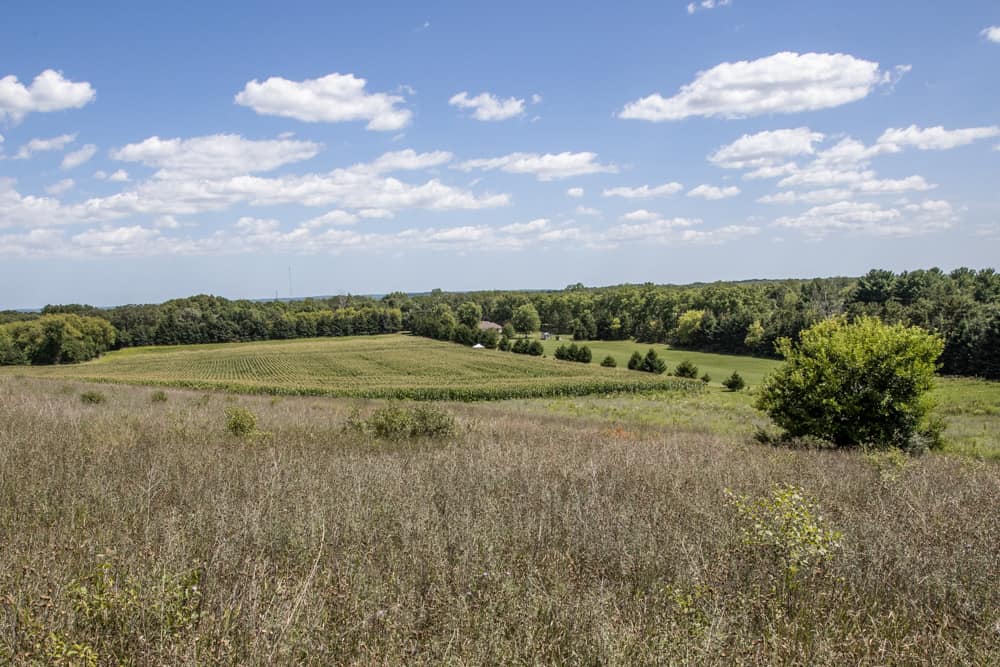
Harvesting Huitlacoche
Depending on where you live, finding your own huit may be difficult. Having a field to hunt during the corn / rainy season makes it easier, but then the problem becomes how to find a field of organic corn you'd like to eat, since most field corn I know of is sprayed with chemicals.
Another tricky thing is unlike other mushrooms, huitlacoche patches are always moving and will concentrate where disturbances are, which brings me to the next point.
Finding the disturbance. You're looking for things that have disturbed the natural cycle of corn growth. Here's quick list of the most common I see.
- Edges of fields where deer feed
- Corn fields damaged by hail and inclement weather
- Fields recently flooded or that are prone to flooding
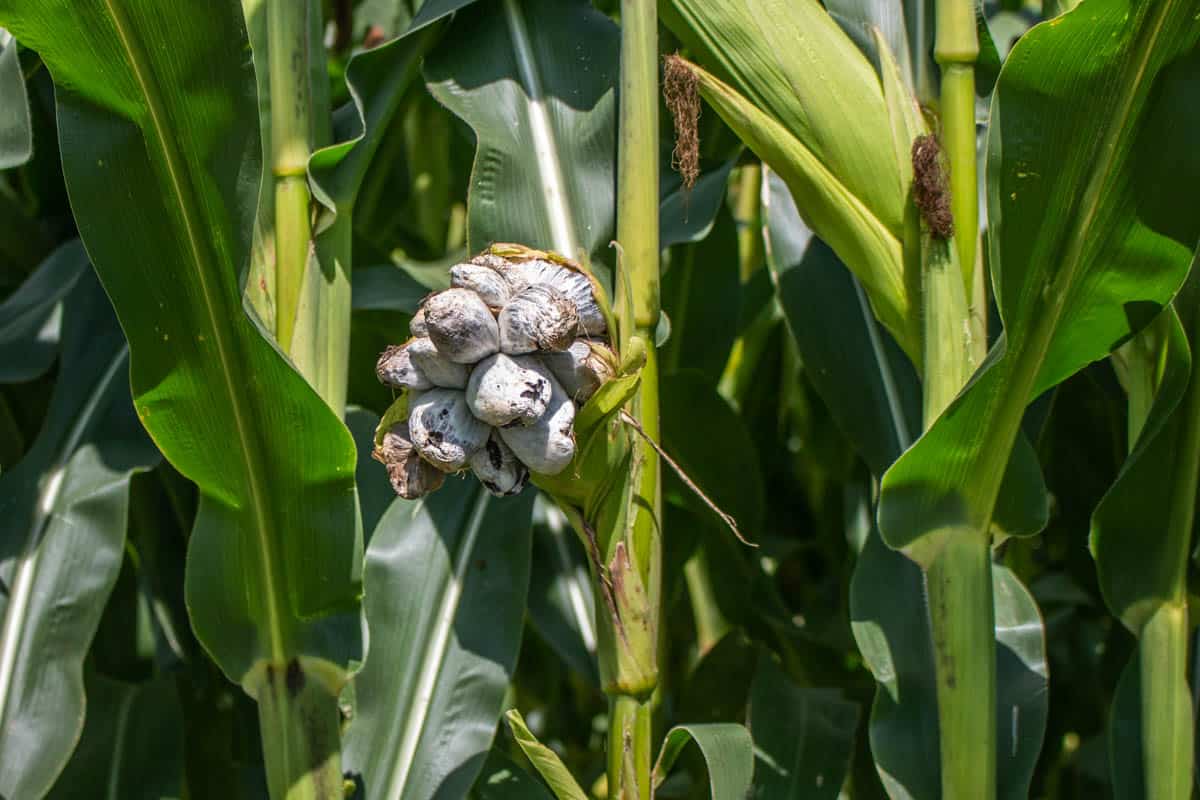
Choose dry, grey ears that seem firm to the touch. Vendors in Mexico often wrap ears in newspaper to insulate them. Once the ears are harvested, chill or process within a 2-3 days. Huitlacoche is delicate, and heavy rain will quickly ruin it, giving mushy kernels oozing a black, inky liquid.
Just like other mushrooms, insects like to eat these so make sure to inspect your cobs. Looking for holes in the husk is a good way of telling if grubs and bugs are inside.
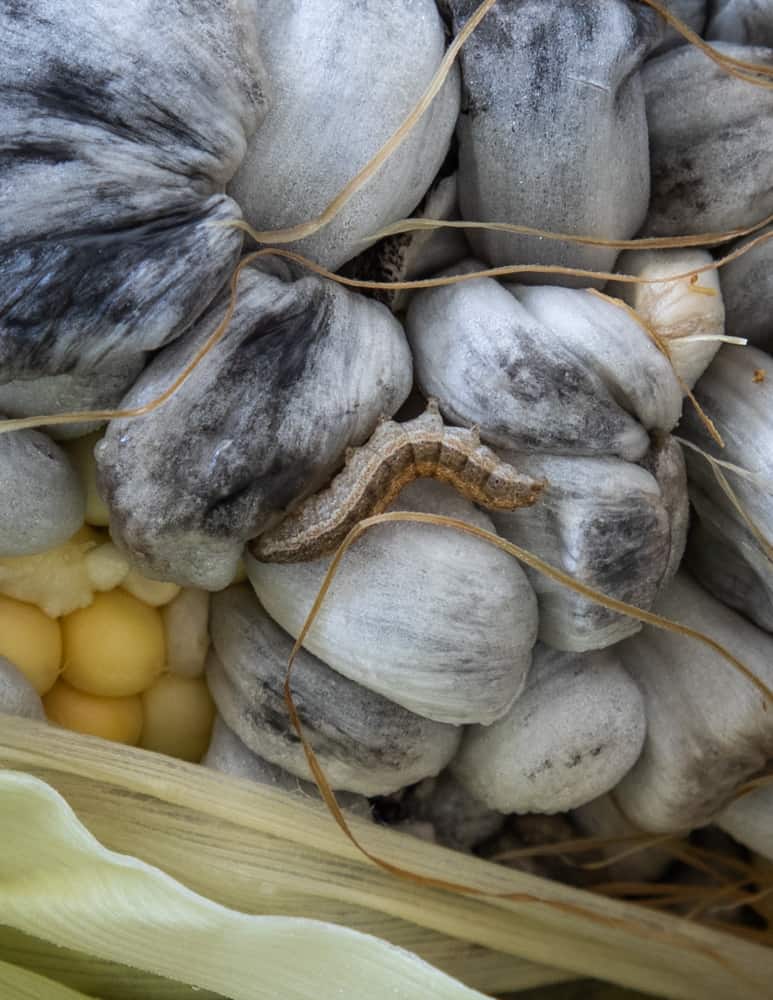
Stages of ripeness
There's a perfect window for harvesting, but the size of that window can depend on cultural preference. Underripe, the infected corn kernels will be too bitter and unpalatable. Too ripe they become increasingly brittle and could turn to a pile of mush on the car ride home.
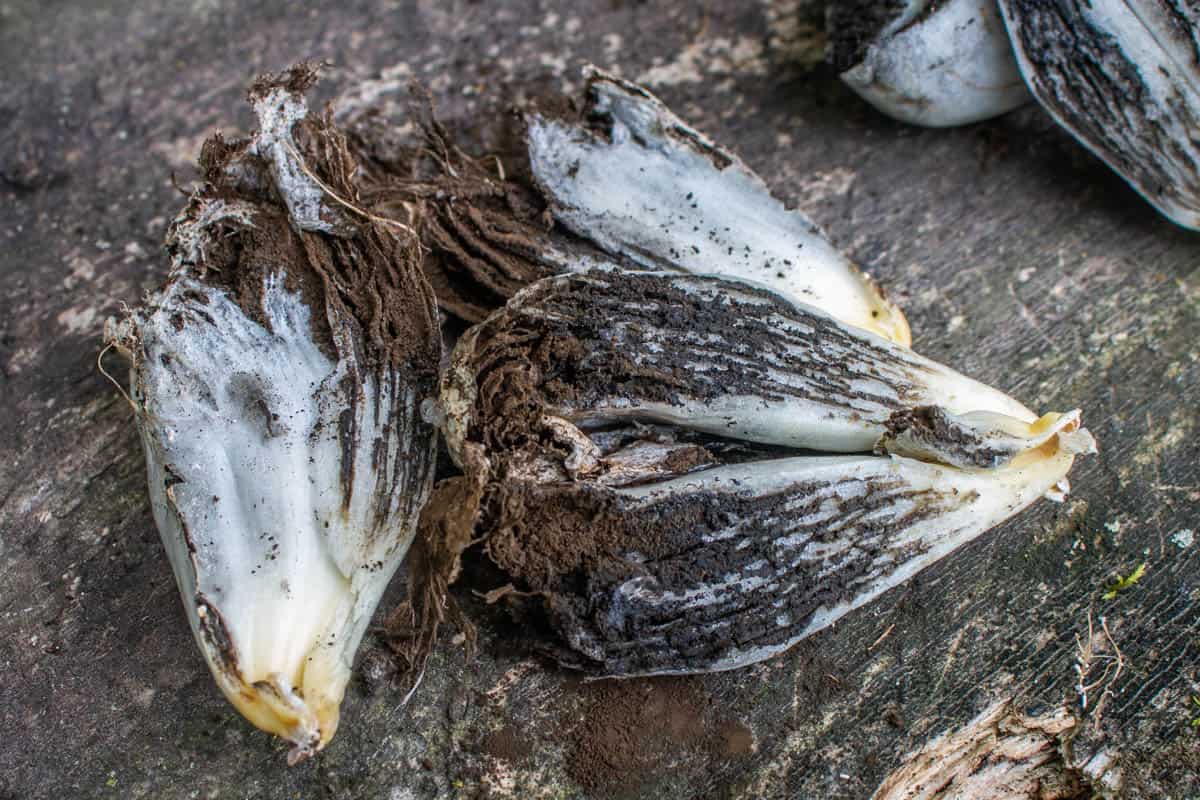
What you want are ears with firm, plump kernels. It's fine if the kernels have a little black on them, which is common. Mushrooms exposed to air will deteriorate faster, so if mushrooms at the top of a cob look past prime, peeling the husk down can give you reveal fresher kernels underneath.
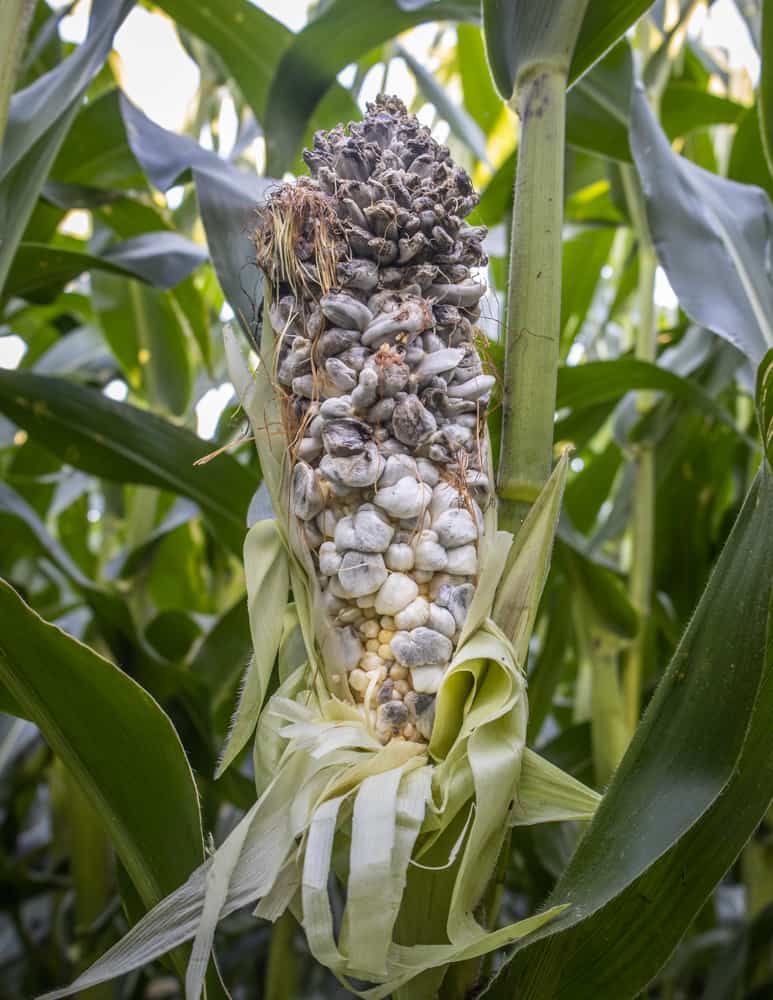
I have to mention the indigenous harvesting preferences. Typically, most people, even mushroom enthusiasts would say that wet or black huitlacoche is probably not good for the table. But, there's plenty of videos online of indigenous people harvesting corn smut that is grey, plump and perfect as I mentioned before, as well as old, slimy looking, or pure black.
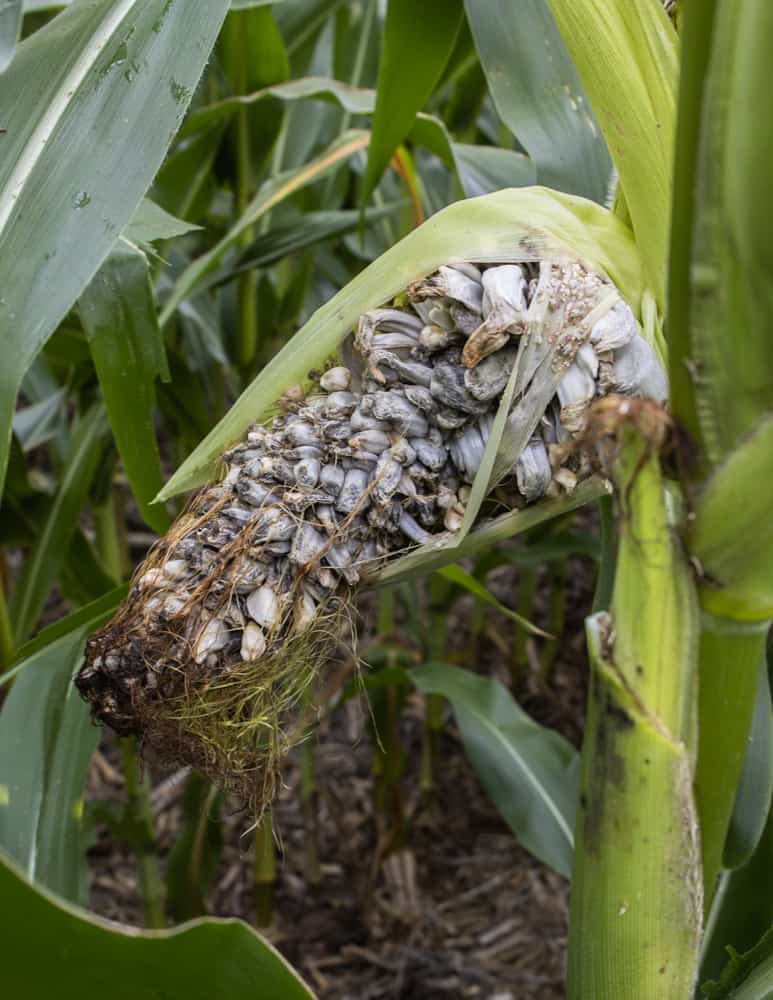
The kernels turn a dark hue and evolve into powdery black spores as they mature. The process of turning black isn't bacterial decomposition, it's a natural enzymatic process used to spread spores. In mushroom speak, it's known as "deliquescing".
Corn smut isn't the only mushroom to turn black and gooey, and a nearly identical analogy can be found in shaggy mane mushrooms, which can also be used as food after they deliquesce, assuming they're cooked.
How to Cook Huitlacoche
The huitlacoche taste is interesting. It has an earthy flavor, with a slight bitterness and a not-unpleasant metallic taste, sometimes, but not always followed by a corn-like sweetness.
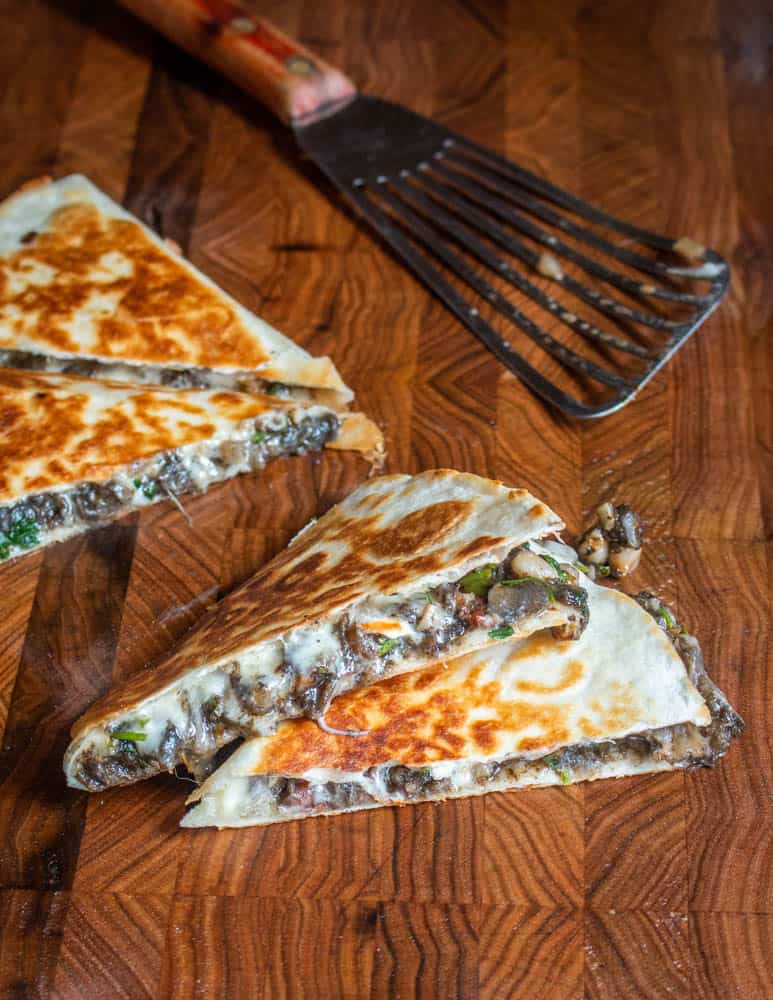
It's a strong flavor that some people won't like, which you can say about most things people call a delicacy.
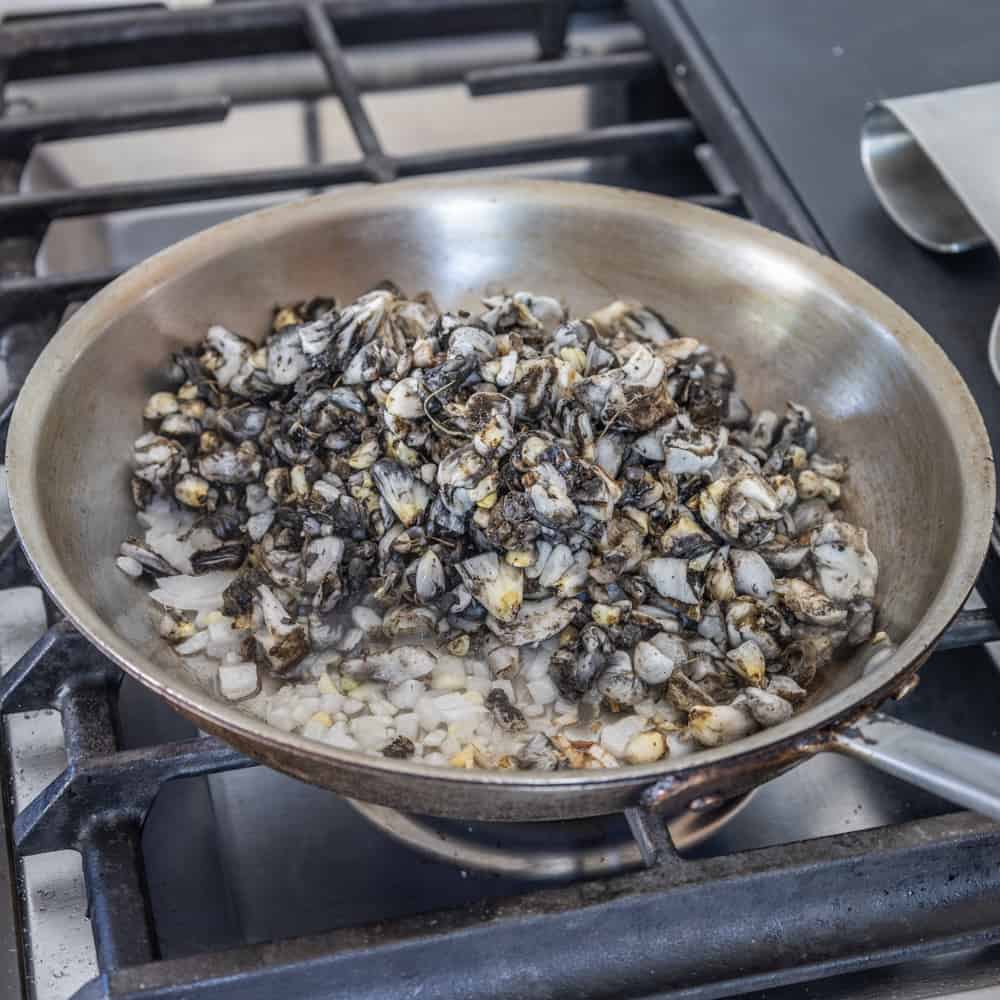
If you don't like it at first, don't give up until you've tried it a few different ways. The more I read about the history and tradition the more I wanted to find delicious ways to cook it.
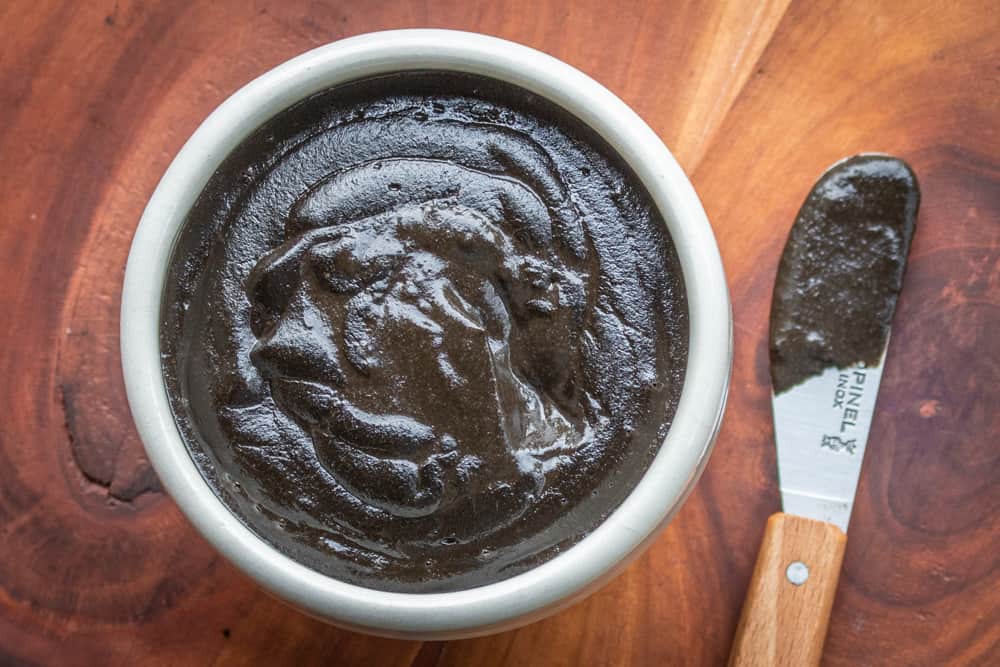
Preserving by Freezing or Drying
Huitlacoche is perishable and susceptible to moisture, so you want to process it quickly after it's harvested. Freezing is my first choice, but drying works too.
Freezing is the best way (as well as the easiest) is to preserve the mushrooms. Put the kernels into a vacuum bag, seal and freeze. Frozen corn mushrooms can be cooked directly from frozen, or thawed and cooked. Once they thaw they'll quickly start to release liquid.
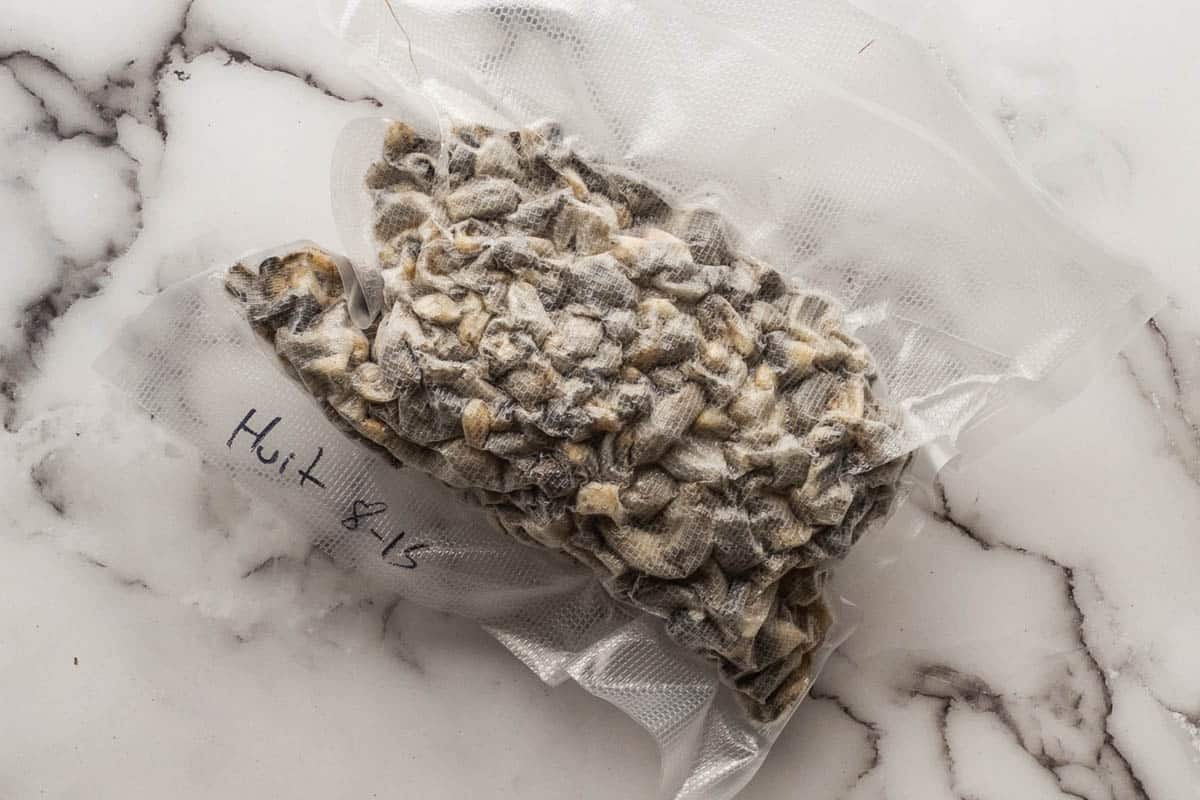
If you work quickly, corn mushrooms can be dehydrated. I haven't come across any traditional recipes using the dried mushrooms, but they work just fine.
To cook with the dried mushrooms, soak in water to cover, then add the water and the soaked mushrooms to recipes where you'd use it. 1 oz of dried huitlacoche will be a good substitute for two cups of fresh mushrooms, or 8 oz.
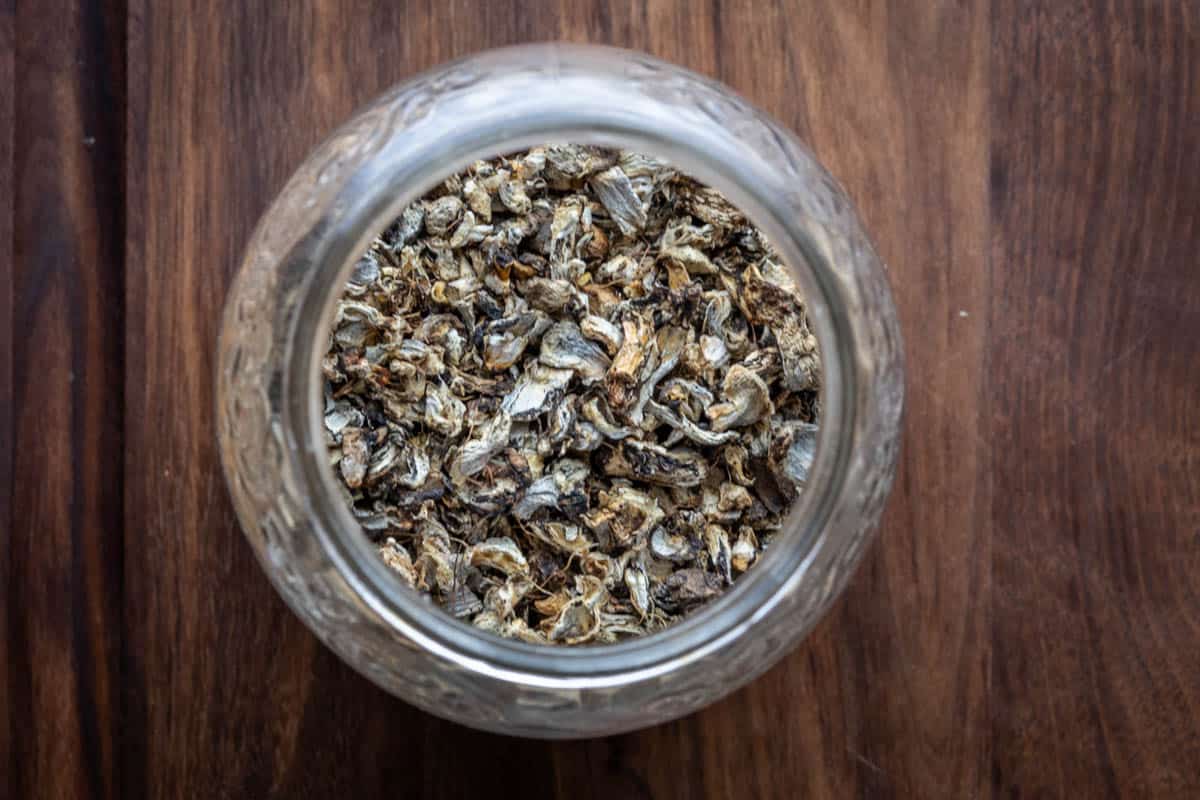
Huitlacoche Recipes
There's a variety of dishes the mushrooms are traditionally used in. As the mushrooms often stand in for meat, they make a good vegetarian taco, especially with cheese. I've even seen huitlacoche ice cream.
Huitlacoche Quesadillas
Mushrooms simmered with onion and tomato in a flour tortilla with Oaxaca cheese are the most popular I've seen, but pupusas, stuffed masa cakes, and tamales are all great.
Corn Mushroom Choriqueso
Corn mushroom and chorizo sausage baked with cheese, eaten with chip makes a great dip for parties.
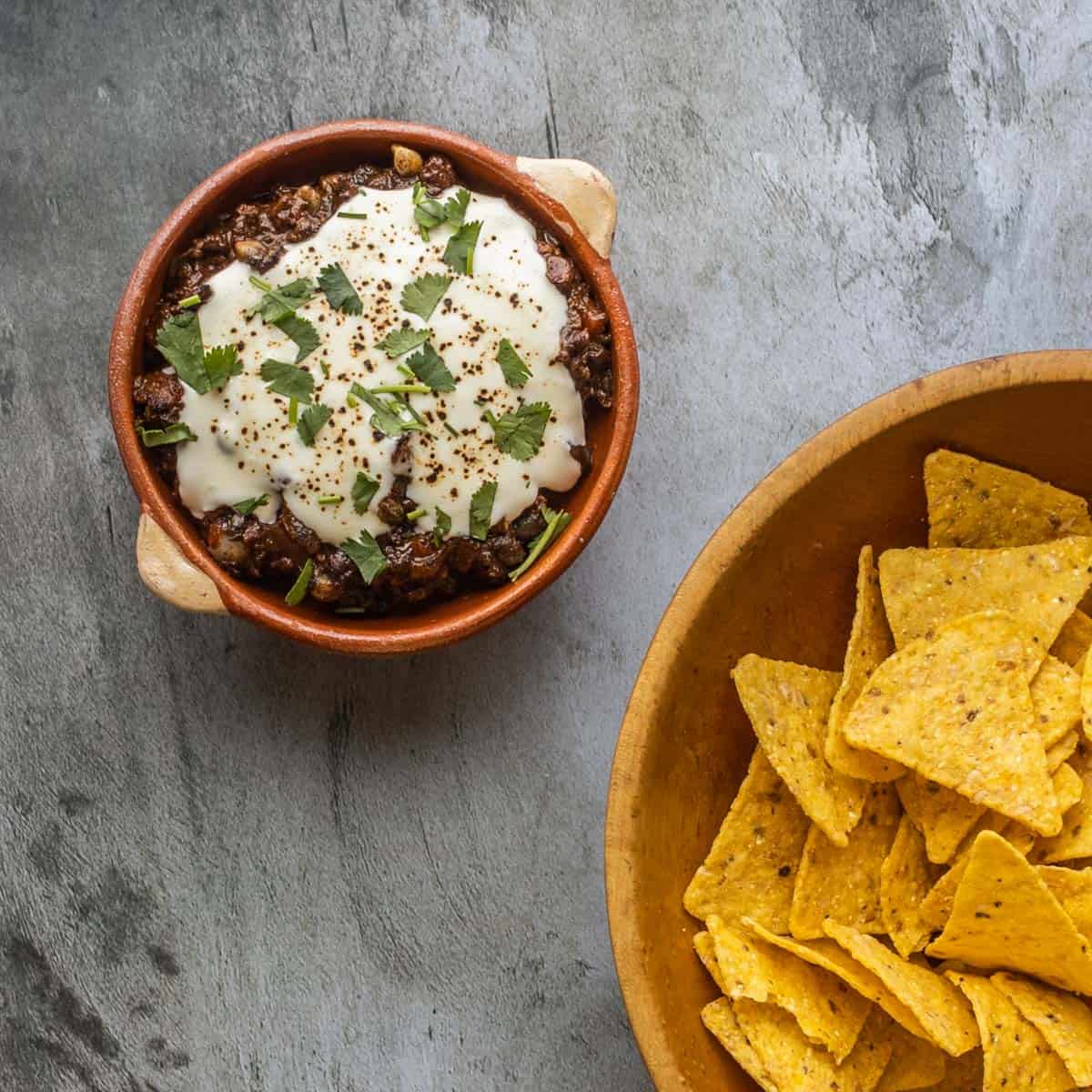
Simple Huitlacoche Tacos
The classic recipe. Mushroom sauteed with jalapeno, onion and tomato, eaten with fresh tortillas.
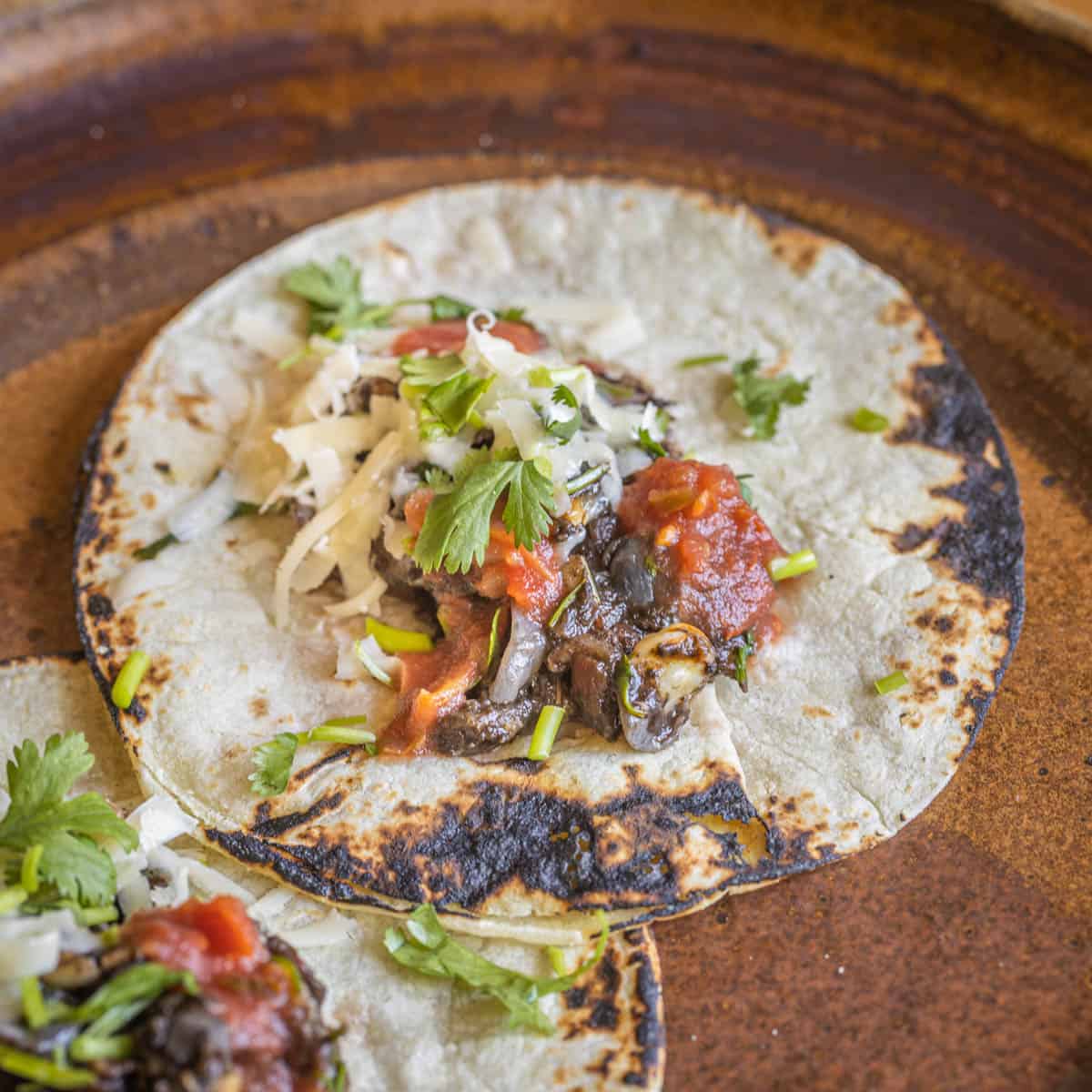
Smoked Shank Stew with Huitlacoche and Tepary Beans
A smoky stew with corn mushrooms, beans and hominy in a chili broth. Inspired by traditional recipes.
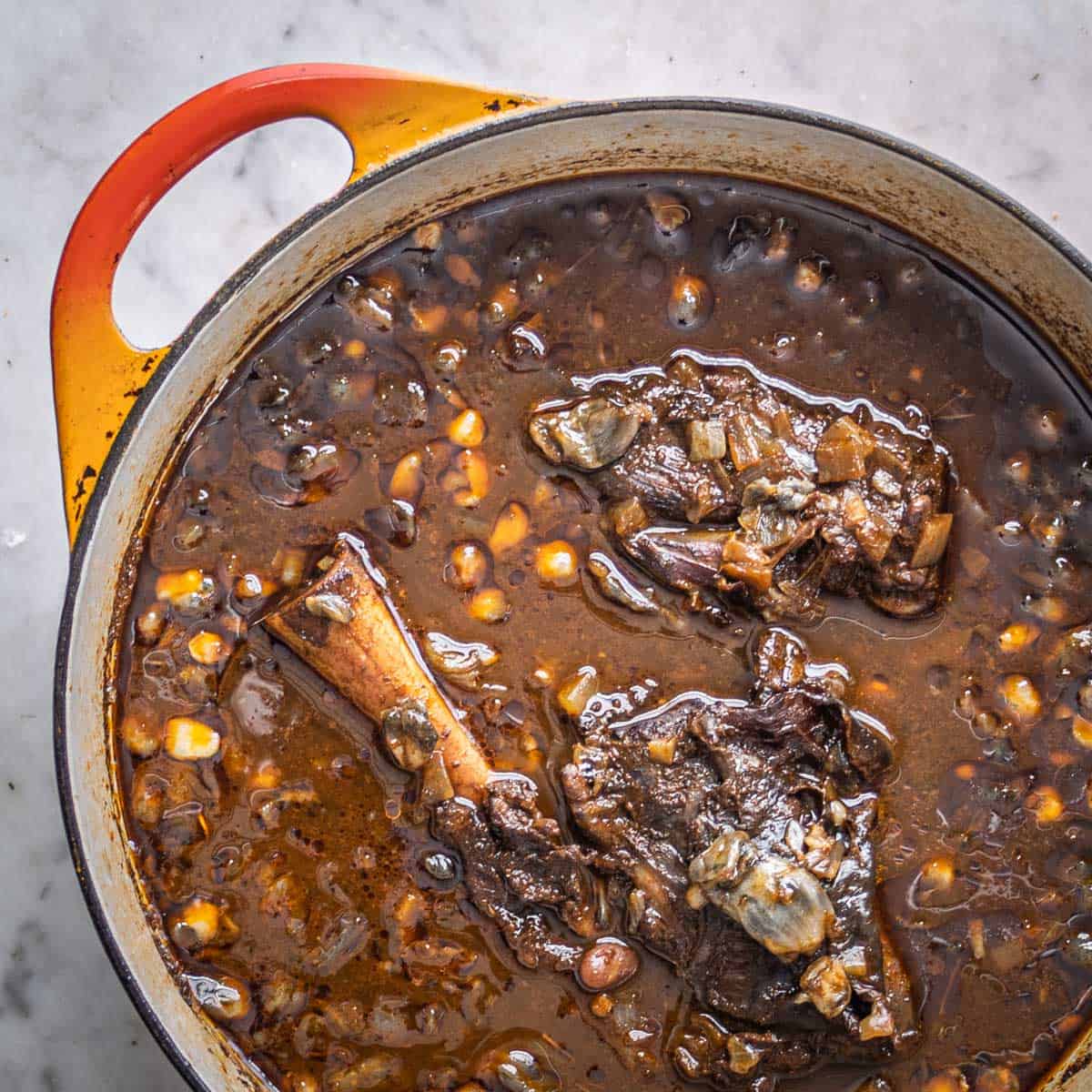

Dan F
Has tried making huitlecoche corn bread?
Alan Bergo
I haven't but that's a great idea.
Benjamin Rodrigues
Hi Alan,
It was great to find a site with so much info on Huitlacoche. I have a question for you. When I visited family in Mexico City in the 80s and 90s I ate huitlacoche preparations. I remember it having a distinct, inky flavor which I can no longer find in current-day Huitlacoche. Since 2018, I've had it in Mexico (Cholula, Playa del Carmen, and Mexico City). I've also tried it in Austin and the S.F. Bay area. The Huitlacoche was almost flavorless, dominated by the flavor of the other ingredients. A possible explanation came to mind. Might the variety of corn have something to do with the flavor of Huitlacoche? The 80s and 90s were pre-NAFTA when GMO corn was not imported into Mexico. Wonder if you'd heard about Huitlacoche's change in flavor? Thanks, Ben
Alan Bergo
Ben, absolutely there's a difference. I'm not an expert here (that's my friend Mushroom Mike LLC in WI) but definitely know that sweet corn is inferior in flavor and has a much smaller yield. Soil conditions and the terroir also have a part to play here like so many thing. The Wisconsin huitlacoche I use is being grown on dent / field corn, and the flavor is excellent, and strong. One thing that helps boost the flavor is cooking the mushrooms down to evaporate water. Drying them also makes them into a potent addition for chili and and kind of dark sauce, et al. Wish I could speak more to the GMO topic but I'd only be speculating there.
K
Thanks for a super article ! Just found my first huit in the last ear harvested from our tiny heritage corn patch. We have a cert org farm in central NH and can never grow corn because of predation. But I grow a small amount now and then for tamale wrappers. With all the rain this year and coyote and turkey damage - perfect conditions. Maybe it can become a new crop! Can't wait to try it tonite !
Alan Bergo
Hey thanks. Lots of work's gone into this so I'm glad it was useful for you.
Mary M Orsini
We just had huitlacoche at Sazón in Santa Fe...I am absolutely wild for it and think it is the single best thing I've ever eaten...and I'm a foodie. Thanks for the recipes. I have a jar to try and just waiting on epazote.
Alan Bergo
Hey thanks Mary. You can use cilantro instead but it definitely makes a difference.
Melanie Harrison
In mexico city and about to cook some huit I found at the grocery store into this pasta dish:: yummy!
Doris
Thanks for the information. This is the first time we grew sweet corn (silver Queen) as we were picking noticed some had the corn smut. I will try some of the recipes.
Danielle
I'm growing corn for the first time in a new climate- Western Kentucky- and while out inspecting my corn plants I noticed light gray fungus looking bits hanging off the corn tassel on a few plants. I remembered reading about Corn Smut and I'm assuming that's what this is. If it's on the tassel, will it also be on the ears?
Alan Bergo
Huitlacoche can infect corn tassels, the kernels, and other parts. If it's on some of the tassels, it may be in ears here and there. You'll have to check and find out.
Aurora
Like wow ! Ive never heard of this - wanting sooo much to try it, i live in Australia, wonder if it is corn growing 'problem' here (read kangaroos instead of deer xx) thankyou Alan, i look forwards to your posts, to see what new food i am going to learn about.
Jessica
Great article. I love huitlacoche and enjoyed learning more about them. And great pictures!
Russell
I grew up in farm country thinking corn smut was poison and nasty and ick.
Then I tried some. It was delicious.
Now I want to grow it. Found a source for spore syringes.
Does it have to be grown on a living corn plant or can it be cultivated like oyster mushrooms, on substrate?
Alan Bergo
I've never heard of it being cultivated from substrate, but that's an interesting thing to consider. I'll ask my friend who grows it as I'm going down to harvest this weekend.
Jacqui
Hi Russel,
Ustilago is an obligate biotroph. It only grows in living plant tissue so you will need a corn plant to get corn smut. Sad but true.
robert fuller
any idea if huitlacoche can be produced like tempeh is?
Alan Bergo
I don’t really follow, can you clarify that a bit?
Eben Lenderking
This is great, and I have been curious about whether it could be obtained in the US...I had heard of some people harvesting it in PA, but hadn't found it. I live also in Mexico part time, and there I can find it fresh in the shop.
I make a salsa from it, and it is divine. I serve it on grilled fish and on grilled meat. And it adds a kind of zesty umami-citrus-nuttiness to the dish. It is fantastic.
It was weird, but I was talking to a friend about your book the other day, and also about Huitlacoche in the same conversation, and there you are posting away. Loving your book.
Alan Bergo
Thanks Eben, how do you make the salsa? It sounds great.
lisa
I read a study that showed the price per ear that farmers can get for corn infected with corn smut is WAY higher than uninfected corn, so maybe it will become more readily available over time.
The featured recipe here is literally making my mouth water.
Barbara Carr
I haven’t been able to find huitlacoche locally, so bought some in a jar. Would this make an adequate substitute in your recipe? I’ve eaten many kinds of wild mushrooms, but this stuff looks a little scary. Thanks for any advice you can give me. Your columns are an inspiration!
Alan Bergo
Thanks, yes canned will work just fine, it’s also sold frozen as the shelf life when fresh is short.
Barbara Carr
Thank you. I’m excited to try it, finally!
Vanessa P
The first time I had it was in a southwestern goulash with tortillas. It is a food that not only stimulates your palate, but your brain and your heart. You just feel good all over. I would label this as a superfood.
Alan Bergo
I completely agree
Dan F
Interesting idea!
My aunt & uncle had a small farm when I was a kid and I well remember the "corn smut" that would occasionally show up. Of course, that was waste and was always thrown out. I first tried Huitlacoche when I saw a can of it at El Burrito Mercado years ago. My take on it is that it is an almost perfect merger of the tastes of corn and mushroom.
I absolutely love elotes... picking one up at the grill outside of El Burrito or La Guadalupana across the street (or any of the other elotes stands around the Twin Cities) on a hot summer day is a great way to take an instant trip to Mexico.
Alan Bergo
Thanks Dan